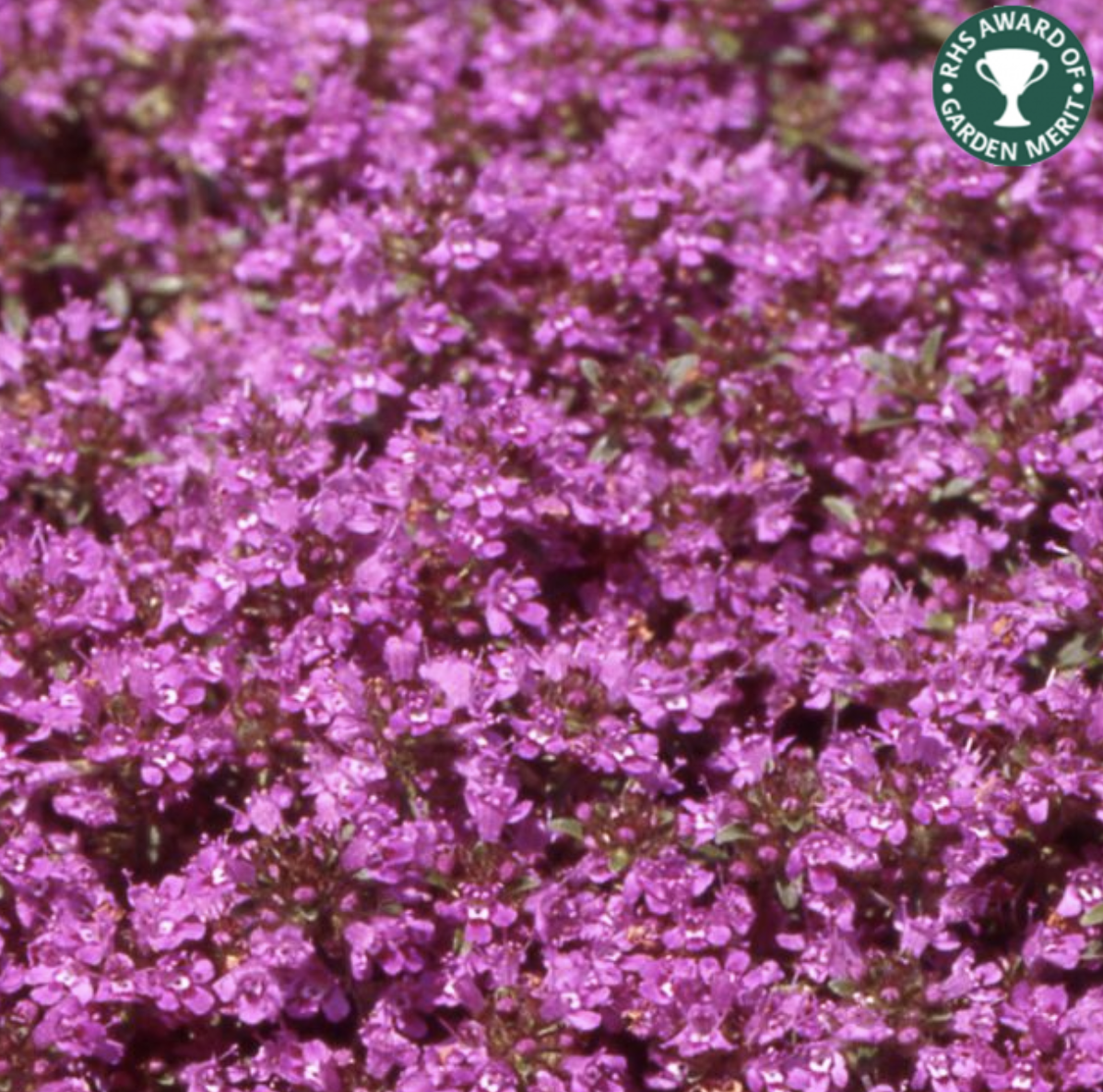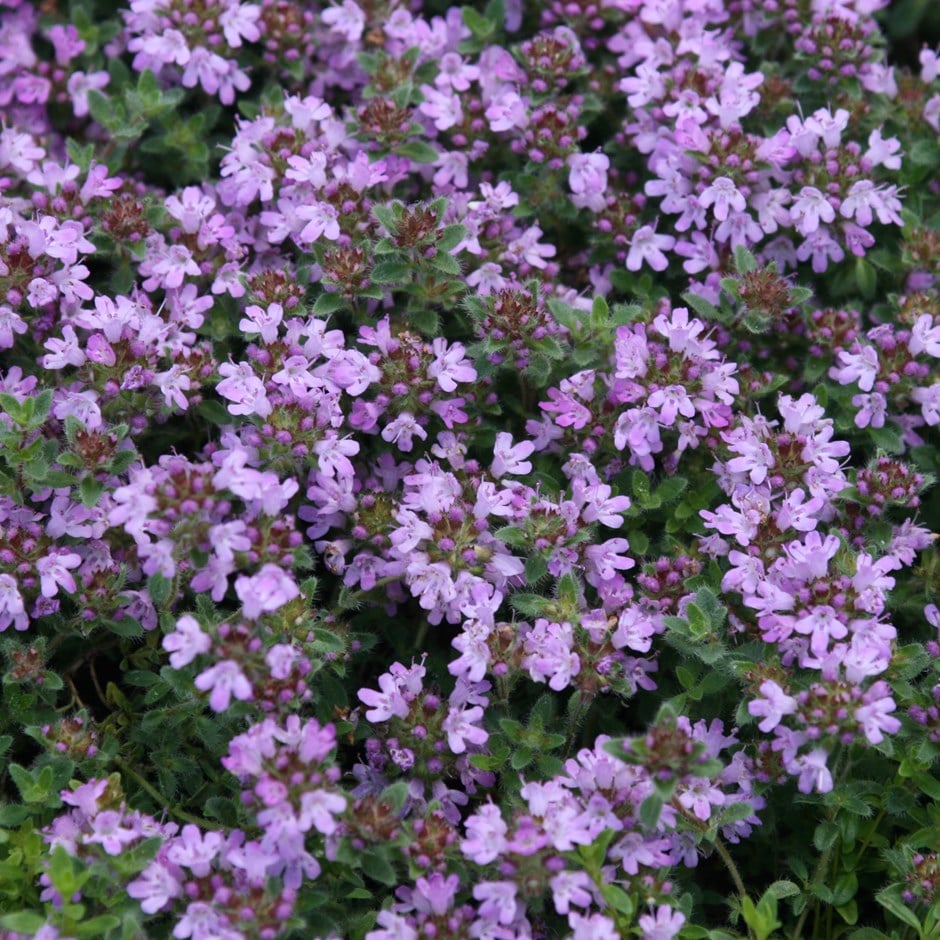Red creeping thyme — garden experts share the truth about this alternative to grass lawns
Is red creeping thyme a viable low-maintenance option for UK gardeners looking to replace their lawns?

Those of us who have all but given up on the struggle of constant lawn care may be on the lookout for a viable low-maintenance alternative. Could red creeping thyme, a native, mat-forming plant, be the very solution those plagued UK gardeners have been looking for?
Before you rush outside with a shovel to dig over your lawn, garden designer Eliza Gray shares the low-down on exactly what the hype is about this herb, and whether or not we should be replacing our classic and much-beloved green grass with this new contender.
With the help of expert gardener Chris Bonnet, she'll also outline how to achieve a successful red thyme lawn if you decide this is the right option for you.
What is red creeping thyme?
Red creeping thyme is a low-growing herb which belongs to the thyme family. It's been a popular ground-cover plant for a while for its ability to create a dense carpet of attractive small pink flowers in summer.
You might see it as part of a rockery or used to soften the cracks in garden paths and paving. But its great habit of spreading out to fill a space has gained it notoriety as a new lawn idea without using traditional grass seed.
But is it a good option?

Shop creeping thyme plants

With bright pink flowers appearing in June, this creeping thyme plant will remain at a low height of 10cm
Pros and cons
"Red creeping thyme can be an attractive and unusual alternative to a traditional lawn, but there are a few things to consider before you invest in one," begins Eliza Gray. "It smells nice, attracts pollinators, deters some biting insects and can be used in cooking."
However, Chris Bonnet, garden expert and owner of GardeningExpress.co.uk warns gardeners wanting a well-groomed space that once red creeping thyme establishes it will creep and spread across other areas of your garden.
"In addition, having a full lawn of red creeping thyme where you have young ones playing or pets running around often probably isn’t an ideal option as it won’t withstand the constant pressure," says Chris.


Eliza Gray has been helping homeowners to create beautiful gardens for more than 15 years.
Add to that it can take a couple of years to establish itself in your garden, so the results may not be as speedy as you'd get with traditional grass seed, and certainly not compared to laying turf.
That said, the long-term benefits may be worth the trouble. You'll no longer need to contend with constant mowing throughout the spring and summer months, and you won't need to water the plants after their first year. Aeration and scarification will also become obsolete tasks.
Red creeping thyme prefers nutrient-poor soil, which means you won't need to contend with fertiliser to try and encourage growth.
How to grow red creeping thyme
"To get the thyme lawn started, you will need to plant small plug plants, about 6 inches apart, in an area free of other plants and weeds," says Eliza Gray.
"They like low-nutrient soil, without any competing plants such as grass. They don't like to get soggy, so they need free-draining soil and full sun to thrive. In their first year, the plants will need watering in very dry spells, to help their root system develop."
"Weed out any competing plants and give them a light trim after flowering. Once established, the plants do spread quickly, growing into a low mat, but care must be taken to plant them in an environment in which they can thrive," says Eliza.
The conclusion?
Eliza Gray offers her final thoughts on red creeping thyme as a lawn substitute: "If you are looking for an attractive, ornamental, low-maintenance garden lawn in a sunny spot, then creeping red thyme will make a great addition to your garden - but if you are looking for somewhere for kids and dogs to run around, you may want to stick to a traditional lawn."
FAQs
Is red thyme safe for dogs?
"Red thyme is a herb and is considered pet-friendly and safe for dogs. As with any plant, just monitor your pets and make sure they are not over-ingesting, as this may cause mild stomach upset,” Chris Bonnett, garden expert and owner of GardeningExpress.co.uk.
How long does it take for Creeping Thyme to spread?
"Creeping thyme can take a few years to fully establish. In the first few months, the plant will establish its root system; this growth, to begin with, can be slow. After that, it will begin spreading outwards, and you should have a dense mat of coverage within 1-2 years,” Chris Bonnett, garden expert and owner of GardeningExpress.co.uk
If you decide you want to ditch a lawn in all forms then opting for a surface which still provides plenty of drainage is key. Have a look at our gravel garden ideas for inspiration.
Get the Homebuilding & Renovating Newsletter
Bring your dream home to life with expert advice, how to guides and design inspiration. Sign up for our newsletter and get two free tickets to a Homebuilding & Renovating Show near you.

Teresa was part of a team that launched Easy Gardens in 2018 and worked as the Editor on this magazine. She has extensive experience writing and editing content on gardens and landscaping on brands such as Homes & Gardens, Country Homes & Interiors and Living Etc magazine. She has developed close working relationships with top landscape architects and leading industry experts, and has been exposed to an array of rich content and expertise.
In 2020 Teresa bought her first home. She and her partner worked alongside architects and builders to transform the downstairs area of her two bedroom Victorian house in north London into a usable space for her family. Along the way she learned the stresses, woes and joys of home renovation, and is now looking to her next project, landscaping the back garden.


